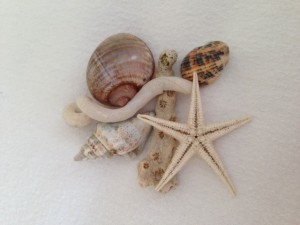Thailand. I can’t imagine what a starfish (shown in the photo with some other shells I found in Thailand) and an elephant might have in common. But they are both keystone species. So what is this new species? (And why have I never heard of it?)
Think of an arch of stones with a stone at the top, the keystone. Without the keystone, the arch collapses. A keystone species (a plant or animal) acts as the top stone, playing a critical and unique role in maintaining the structure of an ecosystem. This concept was conceived by Robert Paine, a zoologist, back in 1969.

Back then, he was studying tidal waters inhabited by starfish and mussels off the Pacific coast. The starfish (the only predators of the mussels) kept the mussel population in check. When he removed the starfish from the ecosystem, the mussels took over, crowding out all the other species and the ecosystem collapsed. The starfish (it turns out) were critical to the health of their ecosystem.
In much the same way, the elephants in Africa eat and destroy small trees making room for the grasses for the grazing animals to eat. Without the elephants, Africa would become a woodland and no longer provide grasses for the zebra, wildebeests and other animals. So both the starfish and elephant are considered keystone species along with mountain lions, beavers, the sugar maple, grizzly bears and a host of others. Lions and tigers and bears, oh my!

